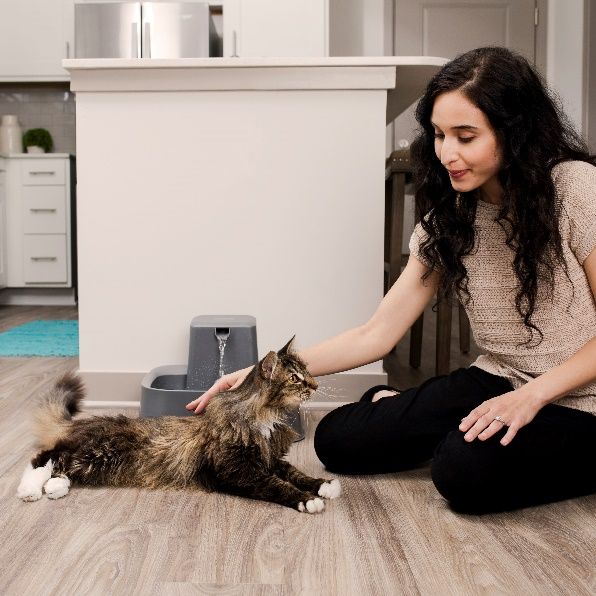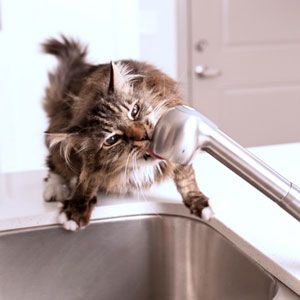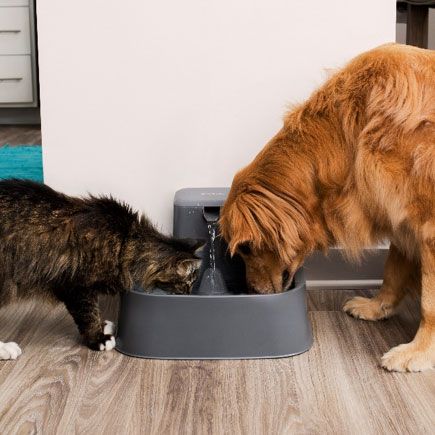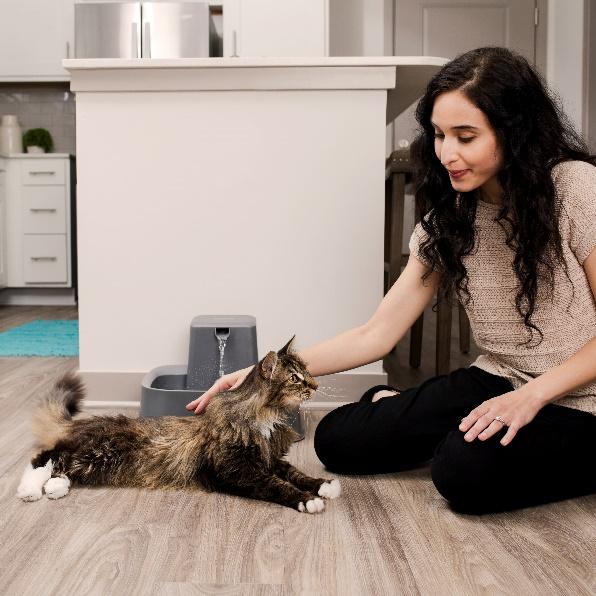Make sure your animals always have access to fresh, filtered water
Summer means time on the water, by the water and in the water. But is your pet drinking enough of it? How can you be sure, and what are the signs your favorite furry family members are dabbling with dehydration?
Good health and life itself depend on water, so PetSafe® posed these questions to Dr. Elizabeth Shull, an animal behaviorist who served 20 years on the faculty of the University of Tennessee College of Veterinary Medicine. The No. 1 thing she stressed? Dogs and cats are largely dependent on their human parents to ensure they are getting adequate water, especially in the heat and pressing humidity that can mark the days of summer. Remember the pet water guideline: Cats and dogs need 1 ounce of water to every pound of body weight, every day. High-volume pet fountains make it easier to meet these guidelines, and you and your pets can be assured the well won’t run dry.
Question: How easily can dogs or cats get dehydrated?
Answer: Dogs and cats can get dehydrated mainly by having their water restricted, having a medical issue, or a physical problem that prevents them from taking enough water in.
Working-breed dogs, however, can be very driven about what they are doing. Unless a handler or owner assures they stop and drink adequate amounts of water, they can become dehydrated in that situation, too.

Q: How long does it take for a dog or cat to get dehydrated?
A: There’s no one answer; it depends on the activity level of the dog (or cat), and their overall health. If a dog is just resting and all systems are functioning normally, it can take longer than a day. If it’s hot and there’s panting and access to water is restricted, they can become dehydrated in a matter of hours.
Q: What are the consequences and signs of dehydration in dogs and cats?
A: With profound dehydration, all systems can start to fail. Blood pressure will drop, and kidneys will start to shut down because they have no fluid to work on. Animals become weak. If you look at an animal that has marked dehydration, their eyes might be sunken. Their mouths will be sticky and dry. Heart rates go up to force thickened blood through the vascular system. Pets will be withdrawn, quieter and less energetic.

Q: Why do some cats seem attracted to a dripping faucet, or running water in general?
A: Cats are very discriminating in what they eat and drink, compared to dogs. A cat can tell the difference between well-filtered and fresh water and water sitting in a bowl. Cats usually become dehydrated because there’s no access to water or they can’t concentrate their urine. Cats can conserve fluids better than dogs. You don’t see cats running around and really active, especially on a hot day. Most of the time if a cat is dehydrated it’s because of a cat metabolic issue.

Q: What can pet parents do to encourage pets to drink more water?
A: Renal disease is common in cats, so encourage cats to eat canned food that has a higher liquid content. Use cat water fountains for cats. A good proportion of cats are attracted to running water . For dogs, it might be more of a consequence of having their access to water restricted. Dogs might be dehydrated because they live outside and the bowl freezes. Dogs get dehydrated because they are left in a hot car – they cannot exchange heat unless they can pant and evaporate fluid off their tongues. Mainly it comes down to husbandry and care. Make sure your pets have access to water.





